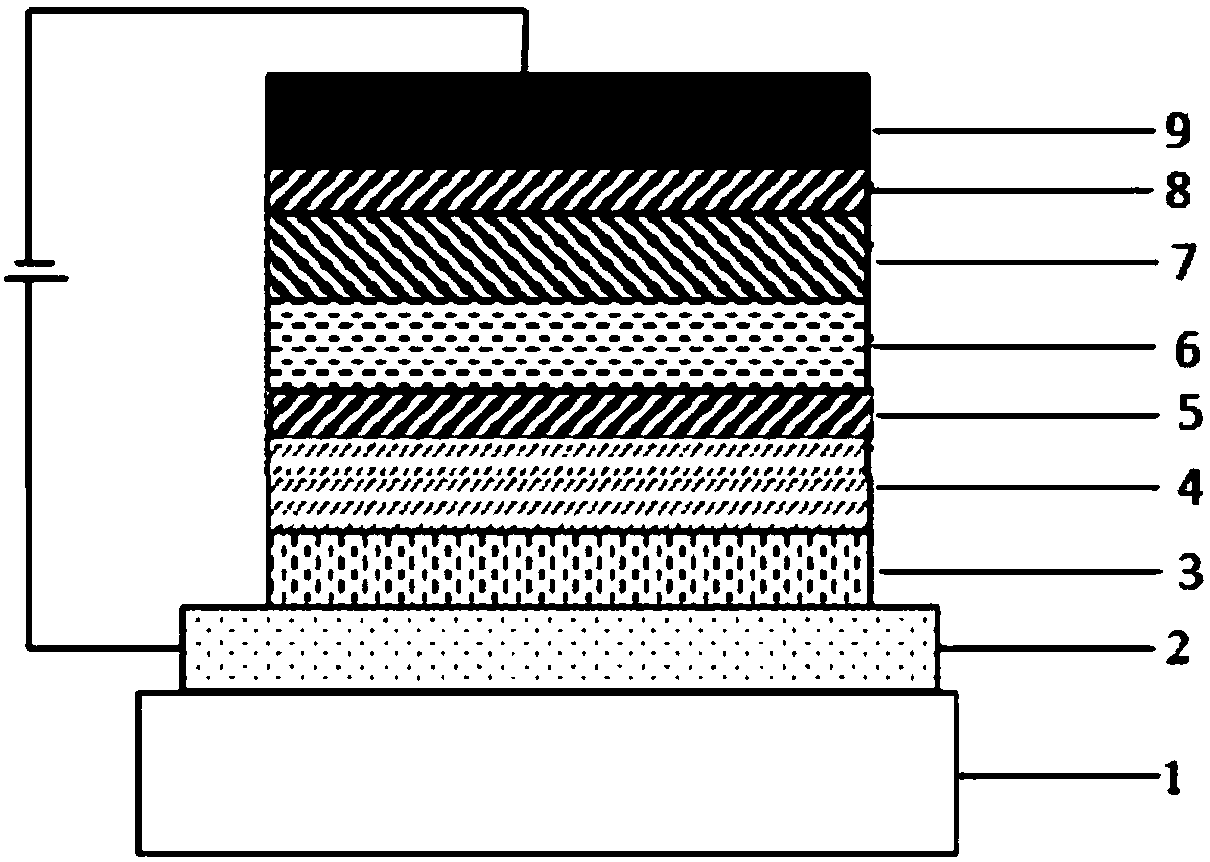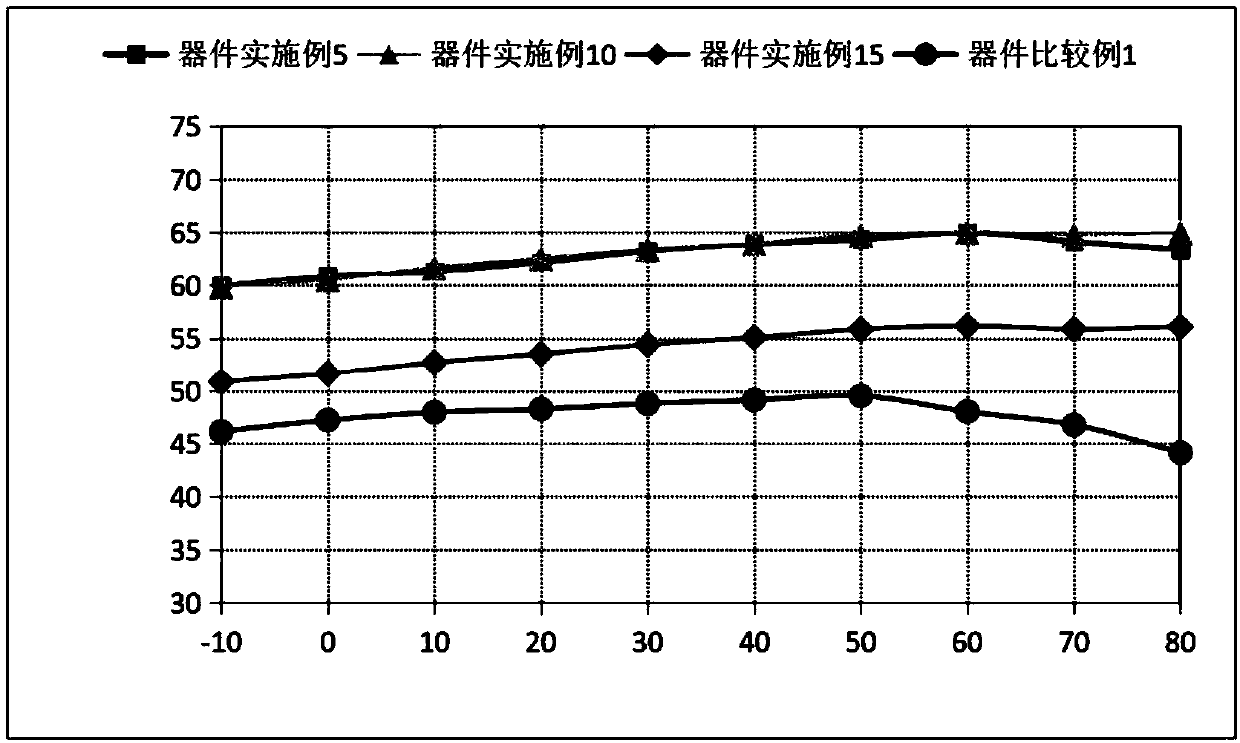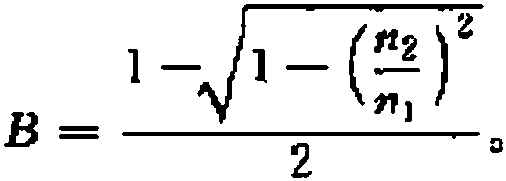Compound with dibenzo-6-membered ring as core and application thereof in organic light emission diode device
A dibenzo six-membered ring and electroluminescent device technology, which is applied in the field of OLED applications, can solve the problems affecting the angular distribution of OLED radiation spectrum and complex manufacturing process, and achieve good application effects and industrialization prospects. High, improve the effect of luminous efficiency and service life
- Summary
- Abstract
- Description
- Claims
- Application Information
AI Technical Summary
Problems solved by technology
Method used
Image
Examples
Embodiment 1
[0046] Embodiment 1: the synthesis of compound 1:
[0047]
[0048] Add 0.1mol of raw material M1 and 0.1mol of raw material O1 to the there-necked flask successively, in 80ml of sodium ethylate solution, under room temperature, stir for 12 hours until the reaction solution turns orange-yellow; then, filter the reaction mixture, and obtain The filter cake was washed with 3% hydrochloric acid solution, and the resulting product was crystallized with ethanol to obtain bright yellow crystalline intermediate C1;
[0049] Add 0.05mol of the above-prepared intermediate to the three-neck flask, add 0.05mol of raw material N1, then add 100ml of dry acetic acid, stir, heat to 90°C, and reflux for 10 hours until the ring closure reaction is completed; evaporate the reaction mixture under reduced pressure Acetic acid was separated, and the residue was recrystallized with ethanol to obtain compound 1 with a HPLC purity of 99.50% and a yield of 76.3%; elemental analysis structure (molec...
Embodiment 2
[0050] Embodiment 2: the synthesis of compound 9:
[0051]
[0052] The preparation method of compound 9 is the same as Example 1, and the difference is that raw material M1 is replaced by raw material M2, raw material O2 is replaced by raw material O1, raw material N2 is replaced by raw material N1; elemental analysis structure (molecular formula C 44 h 35 N 3 ): Theoretical value: C, 87.24; H, 5.82; N, 6.94; Test value: C, 87.25; H, 5.84; N, 6.91. ESI-MS(m / z)(M + ): The theoretical value is 605.78, and the measured value is 605.48.
Embodiment 3
[0053] Embodiment 3: the synthesis of compound 15:
[0054]
[0055] The preparation method of compound 15 is the same as Example 1, and the difference is that raw material O3 is used to replace raw material O1, and raw material N3 replaces raw material N1; Elemental analysis structure (molecular formula C 51 h 43 N 3 ): Theoretical value: C, 87.77; H, 6.21; N, 6.02; Test value: C, 87.75; H, 6.22; N, 6.03. ESI-MS(m / z)(M + ): The theoretical value is 697.93, and the measured value is 697.43.
PUM
| Property | Measurement | Unit |
|---|---|---|
| thickness | aaaaa | aaaaa |
| thickness | aaaaa | aaaaa |
| thickness | aaaaa | aaaaa |
Abstract
Description
Claims
Application Information
 Login to View More
Login to View More - R&D
- Intellectual Property
- Life Sciences
- Materials
- Tech Scout
- Unparalleled Data Quality
- Higher Quality Content
- 60% Fewer Hallucinations
Browse by: Latest US Patents, China's latest patents, Technical Efficacy Thesaurus, Application Domain, Technology Topic, Popular Technical Reports.
© 2025 PatSnap. All rights reserved.Legal|Privacy policy|Modern Slavery Act Transparency Statement|Sitemap|About US| Contact US: help@patsnap.com



